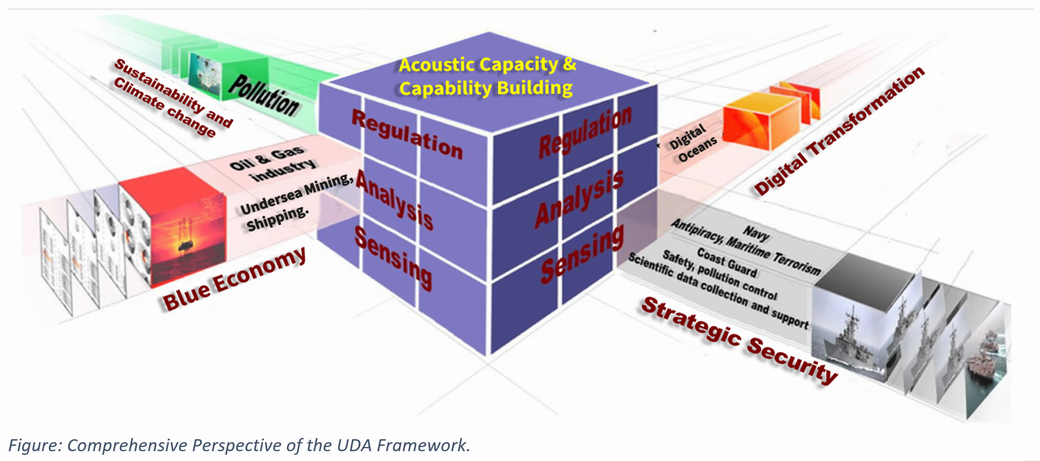
By Dr (Cdr) Arnab Das, Founder and Director, Maritime Research Center, Maharashtra, India
The tropical waters are marked by:
Indian Ocean Region (IOR)
The geopolitical and geostrategic realities in the new global order have ensured that the entire global power play is unfolding in the tropical waters of the Indian Ocean Region (IOR). Every global power wants to ensure its strategic presence in the region, either as a supplier for military hardware, strategic partner to extract energy resources or undersea mineral resources, mentor for sustainability and climate change risk management and more[1]. The nations within the region are increasingly getting subjugated by the extra-regional powers in the name of science and technological support or strategic guidance.
Science and Technology (S&T) Aspects
It is important for us to recognise that the S&T development by the developed world, largely led by the west, happened in the temperate and the polar region during the Cold War era. The demographic realities in the 21st century reveals that these western nations have no manpower to customise their S&T for the tropical waters, where they need to be deployed today[2], However, their economic compulsions dictate them to use coercive geopolitical and geostrategic tactics to push their obsolete products to the global south, knowing fully well that these suffer significant degradation in the tropical waters of the IOR. These western powers are ensuring massive fragmentations geopolitically within the region and also among the stakeholders within the nations. The four stakeholders, namely strategic security, blue economy, sustainability & climate change and science & technology need to ensuring pooling of resources and synergising of efforts to build nuanced approach.
Climate Change Risk
Climate change led extreme weather events, particularly in the tropical waters of the IOR need no emphasis. The sea surface temperature in the IOR has been recorded as the worst among all the oceans and thus urgent measures are required to not only counter, but also find ways and means to navigate, given the crisis. Digital Transformation is a known governance tool to manage the challenges and opportunities across varied domain[3].
Marine Spatial Planning (MSP)
The digital transformation in the underwater space has been referred as Marine Spatial Planning (MSP)[4], by the global entities and the United Nations (UN) has prioritised MSP, under their decade of the ocean sciences for sustainable development programme. The tropical challenges including sub-optimal sonar performance and the socio-economic and socio-political issues make it extremely difficult to prioritise digital transformation in the IOR. Real-time spatio-temporal coverage of the entire underwater domain, requires site specific Research and Development (R&D) backed by field experimental validation. Such ambitious and resource intensive initiative has to be driven by a nuanced framework.
Underwater Domain Awareness (UDA) Framework
Any new initiative of such scale, requires policy & technology intervention along with capacity & capability building to ensure effective and efficient realisation on the ground. The UDA framework[5] developed by the Maritime Research Center (MRC), in partnership with M/S NirDhwani Technology Pvt Ltd (NDT) provides a comprehensive, structured and inclusive way forward. The tropical challenges and opportunities of the IOR will get addressed in a nuanced manner, if the UDA framework is implemented effectively.
[1] R. Pandit, “Navy monitoring entry of another Chinese ‘research’ vessel into Indian Ocean Region,” MSN, 2024. [Online]. Available: https://www.msn.com/en-in/news/other/navy-monitoring-entry-of-another-chinese-research-vessel-into-indian-ocean-region/ar-BB1knnD4?ocid=BingNewsVerp. [Accessed February 2025].
[2] ILO Stat, “Statistics on the population and labour force,” ILO, 2025. [Online]. Available: https://ilostat.ilo.org/topics/population-and-labour-force/. [Accessed February 2025].
[3] A. Prasad, “How does UDA help in Climate Change Risk Assessment? A case for the Indian Ocean Region (IOR),” UDA Digest, 2024. [Online]. Available: https://digest.udafoundation.in/2024/07/18/how-does-uda-help-in-climate-change-risk-assessment-a-case-for-the-indian-ocean-region-ior/. [Accessed February 2025].
[4] Maritime Research Center, “Marine Spatial Planning,” Maritime Research Center, 2024. [Online]. Available: https://maritimeresearchcenter.com/marine-spatial-planning/. [Accessed February 2025].
[5] UDA Foundation, “UDA Framework,” UDA Foundation, 2024. [Online]. Available: https://udafoundation.in/. [Accessed February 2025].
Disclaimer: The views expressed in this piece are those of the author/s and do not necessarily reflect the views or policies of AIDMI.